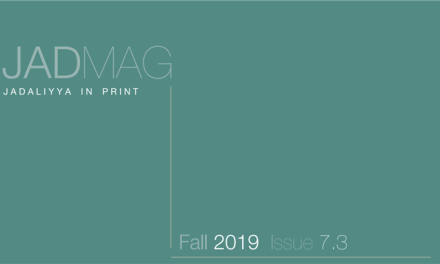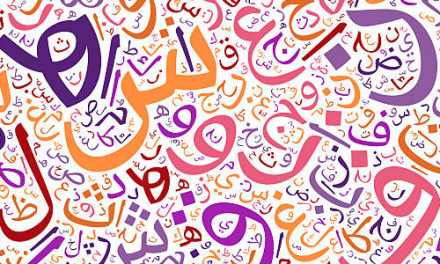By: The Tadween Editors
Bar Bahar (or its English title, In Between), has been increasingly gaining attention across the international film circuit since its 2016 release in Israel. The film won prizes at the Toronto International Film Festival, Haifa International Film Festival, Cinetopia, and the San Sebastian Film Festival.
This is director Maysaloun Hamoud’s first full-length feature film. The film follows the lives of three ‘48 Palestinians (or Palestinians with Israeli citizenship), living in Tel Aviv. Viewers watch Selma, Leila, and Nour navigate sexuality, patriarchy, racism, and sexism in their daily lives. Aside from its entertainment value, the film can serve as a phenomenal pedagogical resource. However, there are several caveats to its use as a teaching tool that must be considered as one looks at its educational value and how it would be incorporated into a lesson plan. This article identifies four limitations that could impact the reception of the film’s message by an English speaking audience. These four limitations are the translations, linguistic shifts, knowledge of the represented community, and the initial target audience.
Translating is incredibly difficult work, and it takes immense skill to convey the emotional and cultural meaning behind a sentence or phrase while also providing a coherent translation of the actual words used. In making the film accessible to an English speaking audience, subtitles were necessary. However, there were multiple instances something was missing in the translation. For example, in a scene with a male extra moving to kiss Leila, the subtitle to her response was, “Are you kidding me?”, whereas, “What? A performance for your mother?”, would be a more literal translation. While the former conveys the absurdity of the man’s move, it eclipses and removes a theme of family that comes back into play multiple times in the film. Audiences relying on the translations, thus, only have access to a segment of the dialogues’ complexity.
Continuing with the focus on translations, they also have a difficult time denoting language shifts. ‘48 Palestinians, generally, are fluent in both Arabic and Hebrew and often shift between the two languages within a single sentence. This language fluctuation, and the mixing in and of itself, has importance in understanding how ‘48 Palestinians understand their place within a larger Israeli society, and the specific words changed from Arabic to Hebrew also hint at notions of control and power. One scene elucidates this point very well. As the restaurant supervisor (an Ashkenazi Jew) scolds Selma for speaking Arabic in the kitchen, he punctuates his reprimand with “khalas!” (Arabic for “enough”). Here, the supervisor reiterates a significant power disparity between himself and Selma. Speaking Arabic is punishable for Palestinians, yet simultaneously appropriate when it is coming from the mouth of an Ashkenazi Jew. In a film that focuses on internal dynamics of the ‘48 Palestinian community, this moment discussing Israeli hypocrisy and racism loses an aspect of complexity for those who do not know Hebrew or Arabic. Granted, there is no clean way to show non-Hebrew/Arabic speakers these language shifts, especially when they happen on a word-by-word basis. However, it would be remiss to ignore these shifts when discussing about the film.
Just as there are implied messages behind certain phrases and choosing to say something in Hebrew versus Arabic, there are also unspoken references that could be lost if someone is not familiar with the ‘48 Palestinian community. When Nour is first introduced, Selma comments, “You’re not from Haifa like Rafif [a former roommate]?” Asking such a question not only situates Tel Aviv as a space where ‘48 Palestinians from across Israel converge upon for a variety of reasons, but it also touches on perspectives of a liberal-conservative spectrum and illuminates where different cities fall on such a gradient. In this case, the liberalness of Haifa is juxtaposed to the conservativeness of Umm el-Fahm, where Nour is from. Not having an awareness about the reputations of different cities may allow the characters storylines to stand apart from the societal context. But, it also brings into question the intentions of Hamoud as the director. Did she, as someone living amongst and part of the community, rely on that knowledge to illuminate backgrounded points of contention within ‘48 society? And, how did she use awareness of the community to subtly challenge the monolithic conceptions of cities and how they sit on the liberal-conservative scale?
As we unpack the educational limitations and prospects for this film, though, we must also remember and consider the expectations we have as viewers versus Hamoud’s intentions as the producer and director. Target audience is a major factor in conversations about what is and is not lost in the nuances of translation, language changes, and allusions to the community. Hamoud has made it clear that first and foremost, ‘48 Palestinians are her intended audience. Wanting to engage her own community, the film serves as a mirror, forcing ‘48 Palestinians to confront some of their internal issues. For this audience, all of the problems listed above are irrelevant. ‘48 Palestinians know the references, they know the languages and the “hidden” meanings. The storylines may resonate beyond the ’48 Palestinian community, but that does not mean everything about the film must cross those same lines. While we can take art and apply it to an educational framework, the creator’s aim for their work may be something entirely different. We cannot hold these limitations for pedagogy against Bar Bahar or Hamoud, as it would be placing undue expectations on the work. Rather, we must take these critiques and use them to adequately adjust teaching practices and strategies developed when using this film, and any film, in a class.
[This article was published originally Tadween`s Al-Diwan blog by Diwan`s editor, Mekarem Eljamal.]











